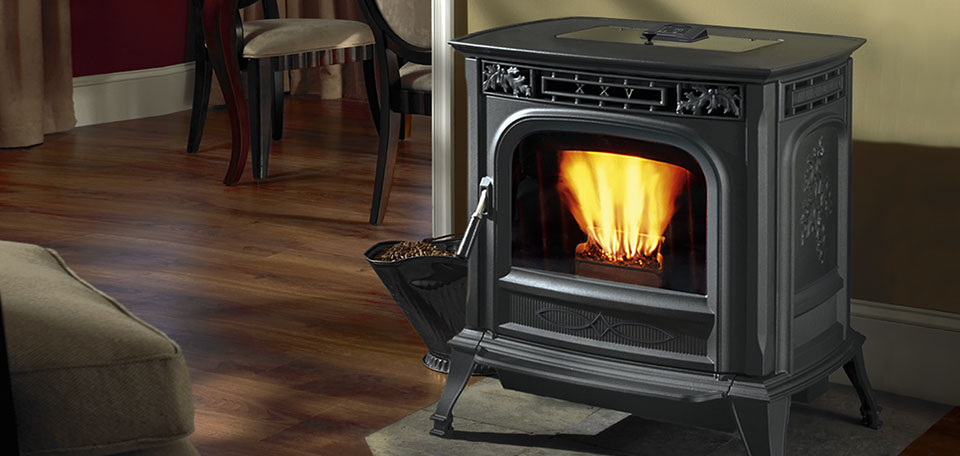I don’t know about everyone else but here in Ohio, it just went middle of summer to very late fall overnight. Almost like Mother Nature was going 85 in a 55, saw a state trooper and slammed on the brakes. I can’t take full credit for that line, saw a funny meme online. But for real, I’m talking about highs in the mid to lower 80s and now we are just barely in the 50s during the day and experiencing frost warnings at night. It’s around this time that a good ol’ fashioned bon fire is in order and we have been having some fire pits burning as of late. It really is a beautiful, and relaxing thing… the smell left on your clothing isn’t everyone’s favorite but everything can’t be perfect. Throw up some lawn chairs, get some friends together for some cold drinks and a great night; reminisce on the good times with some s’mores.. But recently, I was just staring off into the fire and randomly got onto the topic of wood burning stoves and fireplaces. When it comes to heating your home, I have a great mix of friends that have different methods of heating; from a furnace to fireplace and everything in between, minus a boiler. Not saying there is anything wrong with a boiler, it’s just not something my friends have so I can’t speak to it. So we all got to talking around the fire and those who have fireplaces love them while those without one are out of luck, or at least it is highly unrealistic to have a fireplace added if you aren’t planning to drop money. But just because you can’t simply add one and have the classic brick look doesn’t mean you can’t enjoy the wood burning heat. That is where a wood burning stove comes in and this got me digging a little deeper into my options since I am one of those unlucky homeowners without a brick fireplace.

The aesthetics of a wood burning fireplace or stove along with the radiant heat that can be felt are unmatched when it comes to a furnace. When you see these picturesque shots of couples or families together on post cards around the holidays, there is about a 90% chance a fireplace is somewhere to be found. Whether you are a couple just looking for a romantic night in, having company over, or trying to keep those tootsies warm, a fireplace carries the gravitational pull of the moon… heck even foes likes a dog and cat come together to soak up the pleasure of a fireplace. So without further ado, let’s break it down.

Wood Burning Stoves
Wood burning for heat goes all the way back to the days of caveman and woman. It’s pretty simple: take some dried and aged wood, put it in a pile and light it on fire. Luckily technology has come a long way from flint and stone so many of us will have a lighter handy. You might need some kindlin or a starter log to assist the initial flame but after that you are smooth sailing, minus the need to stir around the coals and refill it. Stove burners can get risky when opening as the iron gets very hot so you have to make sure to grab onto the designated areas and not touch elsewhere. Depending on which style you have, brick fireplace or freestanding stove, there are some additional safety risks. Brick fireplaces do not always have a door in front of them to trap/hold back the smoke or smell and even when they do, homeowner’s don’t always use them. Some simply have a gate or screen to help in its absence but unlike a closed door, this leaves you and the home exposed. Logs break down as they burn and for this, they settle in unpredictable ways which can and have led to logs rolling off onto your floor. YOU DON’T WANT THAT! This is where log racks, screens, gates and doors become necessary.
Adjusting temperature to your desire can also become a challenge since you are at the mercy of the flame to dictate how warm the room gets and I can say I have been a victim of sweating indoors; it’s not a pleasant feeling. There is also a matter of efficiency variances with wood burning fireplaces or stoves. Older and less efficient fireplaces allowed a good portion of the heat to rise and escape the home so you were losing some of the heating potential but the more efficient systems of today push more of the heat into the home and less out the chimney, allowing you to get more out of less. There is also the fact that a flue requires an exit directly from the inside of your home to the outside. Again, depending on efficiency and if the flue has a built in damper, some homeowners experience a greater back draft of cold air when the fireplace is not in use and that only makes the home feel less comfortable. Just remember that higher efficiency always comes with a higher price tag.
Key Takeaways:
- Wood stoves are generally cheaper and less efficient
- Wood burning stoves burn everyday wood so long as it isn’t “green”, or not seasoned. You can just go cutting down a perfectly good tree and think you have wood for a fire.
- Wood is very accessible.
- Wood ranges in price and quality. You could get it from your back yard, buy it off someone residentially, buy it from a local store, get it by the truck load and many other ways. A cheap way to get wood and some exercise, look for craigslist ads where a homeowner has recently had a tree fall over and they need it removed. I have accompanied my father on multiple trips like this and the homeowner would rather pay you in free wood to cut up the tree then pay a landscaping company to take care of it. It’s really a win-win for both parties as neither group are out any money when they would be otherwise.
- Wood needs to be replenished when the fire starts to go down. It’s always nice to have a small stock indoors and nearby if possible but if you aren’t prepared, you may need to walk outside into the cold and grab more wood to bring back indoors.
- Wood burners require annual cleaning or more frequent. Creosote cleaning logs can be used or manual scraping.
- Wood doesn’t always burn as expected and sometimes you might be left with odors or smoke that reduces indoor air quality.

Pellet Stoves
Pellet stoves have been gaining traction in the market and for many reasons. Pellet stoves also don’t look much different from a wood burning stove on the outside. They come in both freestanding or as an insert that can take the place of your existing wood stove or fireplace. A pellet is not what many of you might be thinking (pellet gun or bee bee), it is actually encapsulated sawdust. The difference is not just in the name or product used to burn, which are both obvious, but how you feed the stove. The internals on a pellet stove are much more complex. Traditional wood burning methods require you place new logs inside to keep the flame going and you are essentially at the mercy of the flame to dictate the temperature.
You fill up the hopper with your pellets, set the integrated thermostat to your desired temperature and the auger inside will release an amount equal to the demand you have requested with the thermostat. This provides pellet stoves with much more user control and provides a little bit more convenience in my opinion. This means you can fill it and walk away knowing that the thing is smart enough to keep the flame going without your assistance. It’s also important to note that pellets stoves burn extremely hot! That isn’t to say your home will be uncontrollably hot, it’s to say that you don’t need to worry about creosote build or ashes which is great for both fire safety and indoor air quality.
Key Takeaways:
- Pellet stoves are typically more expensive and more efficient than wood burning.
- Less maintenance and arguably, easier/less messy clean up.
- Pellets come in large bags that you can carry and are consistent in quality compared to dragging around a bunch of wood which quality can vary depending on where you got it from.
- You need to have a storage location to keep pellets, even when inside a bag, from retaining the elements unlike wood which can be left outside and simply dried out or even burned off.
- The flame isn’t nearly as captivating as a wood stove in my opinion.
Additional options include ventless and direct vent fireplaces which run off gas or you have the option at infrared and electric powered flame look a likes. Each has their benefits and drawbacks but not each will work in every scenario. For instance, if you don’t have gas lines in your home then its on you to decide if the expense of having it installed is worth it or if you go with an electric option. Or if you aren’t on board with the idea of cutting a hole in your ceiling and roof, or walls and exterior then a ventless option is your choice over a direct vent but then you need to consider the difference in flame patterns and the different IAQ implications of removing a vent. We can cover those in another blog.
As great as any of these options are, just remember they are there to heat your home. That is why you love them after all, right? But when they aren’t working it’s not so good. And even when they are working, is it operating safely? The majority of us probably saw the gut wrenching season finale of “This Is Us” or heard about it from a friend. While they are different products, faulty electrical can just as easily affect the HVAC system.
- Remember to clean your chimney to remove soot build up if you are burning wood. Once you get at or above about 1/4in of creosote buildup you are literally “playing with fire” and you should clean it for your own safety.
- Remember to check all your electrical connections, and gas lines if operating a gas option. You don’t want to be breathing it in and we all know what happens when a spark meets with gas.
- Check wires for any cuts or loose connections if using an electric option, and even more so when using natural gas. Last I checked, a spark and gas don’t go great together unless you’re a pyro or into explosions.
If you don’t have an alternative heating system and you only have a furnace, just make sure to keep up on the routine maintenance so that your equipment is running smoothly. You also don’t want to be sacrificing comfort or Indoor Air Quality. It is also important to note that if your HVAC system is operating as it should (properly sized, clean coils, clean filter, balanced, low duct leakage, etc.) then you won’t have a need for a supplementary heating system unless you genuinely love the look and/or smell of a natural flame. Some claim that burning with wood saves them money over electric, gas or oil but the worth of it is in the eye of the beholder when you factor in the upfront cost and ongoing manual maintenance. So…. What is your preference?
